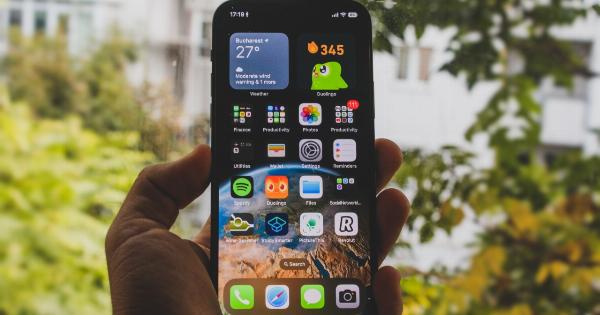In the age of technology, social media has quickly become an integral part of our lives. With platforms like Facebook, Instagram, and Snapchat, adolescents are constantly connected to their peers and the wider world.
While social media offers numerous benefits, it also poses several implications for adolescent identity formation. This article will explore these implications and discuss how social media can impact the development of an adolescent’s sense of self.
1. The Influence of Social Media on Self-Esteem
Social media platforms are primarily filled with carefully curated images and posts that showcase the best aspects of people’s lives.
This constant exposure to idealized versions of others can lead to feelings of inadequacy and lower self-esteem among adolescents. Comparing themselves to the seemingly perfect lives of their peers can create unrealistic expectations and negatively impact their sense of self-worth.
2. The Construction of Online Personas
Adolescents often create online personas that differ from their real-life selves. These personas are carefully crafted to fit into specific social contexts and gain validation from peers.
This construction of online identities can blur the lines between reality and the digital world, making it harder for adolescents to differentiate between who they truly are and who they present themselves to be online.
3. The Pressure for Conformity
Social media platforms often perpetuate trends and ideals that can lead to a pressure for adolescents to conform. They may feel compelled to alter their appearance, interests, or behaviors to fit in with the prevailing online culture.
This can hinder the development of their authentic identity as they strive to align themselves with what is deemed acceptable or popular by their online peers.
4. Cyberbullying and Negative Feedback
One of the darker sides of social media is the prevalence of cyberbullying and negative feedback. Adolescents can be targeted by their peers or even strangers, leading to feelings of shame, loneliness, and depression.
Such experiences can significantly impact the formation of their identity, as they may internalize negative comments and struggle to establish a positive self-image.
5. The Amplification of Social Comparisons
While social comparisons have always been a part of adolescent development, social media intensifies this process. Constant exposure to others’ achievements and experiences can lead to increased feelings of jealousy and envy.
This focus on comparisons can distract adolescents from their individual growth and create a constant need for validation and approval from their online networks.
6. Lack of Face-to-Face Interaction Skills
Adolescents who spend excessive amounts of time on social media may struggle with developing essential face-to-face interaction skills.
Online communication lacks nuances such as body language and tone, making it difficult for them to interpret and respond appropriately in real-life social situations. This can impact their ability to form meaningful connections and shape their identity within offline relationships.
7. The Influence of Online Communities
Social media provides adolescents with the opportunity to connect with like-minded individuals and form online communities. While this can be a positive aspect, it also poses risks.
Adolescents may be easily influenced by extreme beliefs or ideologies within these communities. Such influences can shape their identity in ways that may not align with their core values or beliefs offline.
8. Misrepresentation and Reinvention
On social media, adolescents have the ability to reinvent themselves and present a version of who they wish to be. This can involve exaggerating qualities, adopting personas, or even creating entirely fictional characters.
While this may initially provide a sense of freedom and escapism, it can hinder the development of true authenticity and self-acceptance.
9. Access to Potentially Harmful Content
Adolescents on social media platforms have access to a vast amount of content, both positive and negative. Exposure to explicit, violent, or otherwise harmful content can have a significant impact on their identity formation.
It can desensitize them to inappropriate behaviors or ideals and shape their understanding of what is considered acceptable or desirable.
10. Balancing Online and Offline Identities
Adolescents must learn to navigate the delicate balance between their online and offline identities. They need to develop the ability to be authentic and true to themselves across both realms.
The pressure to maintain consistent online personas can create anxiety and hinder the exploration and integration of different aspects of their identity.




























